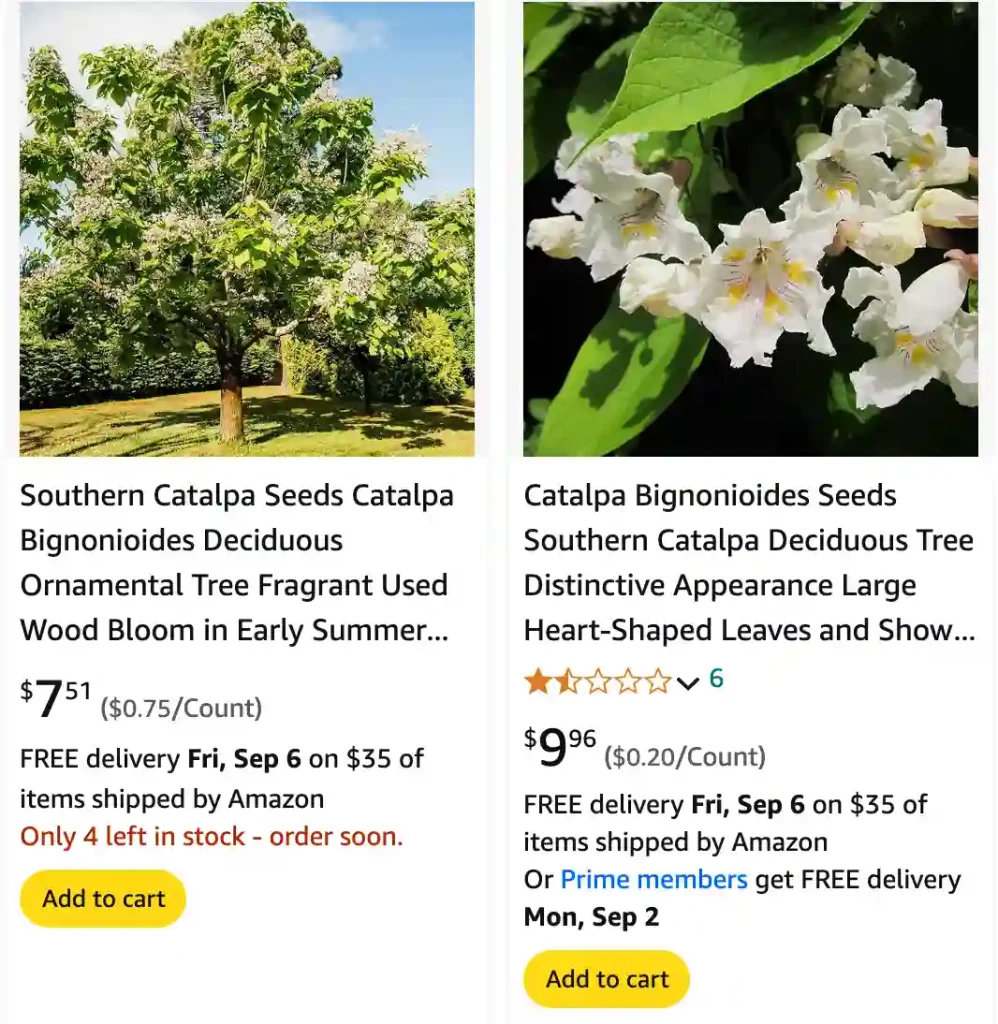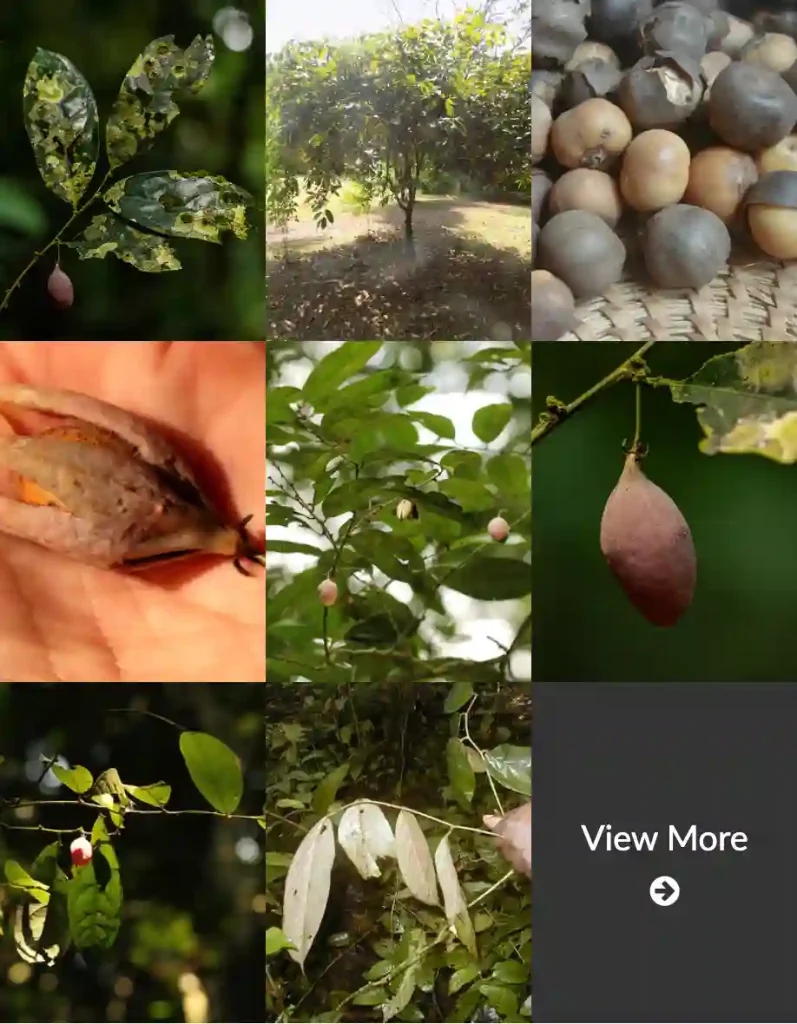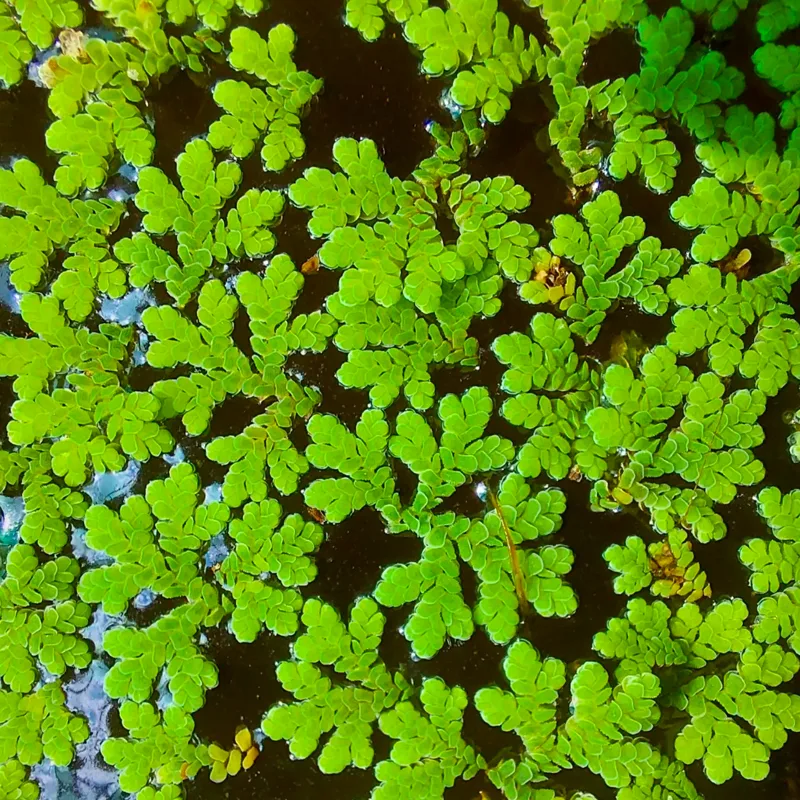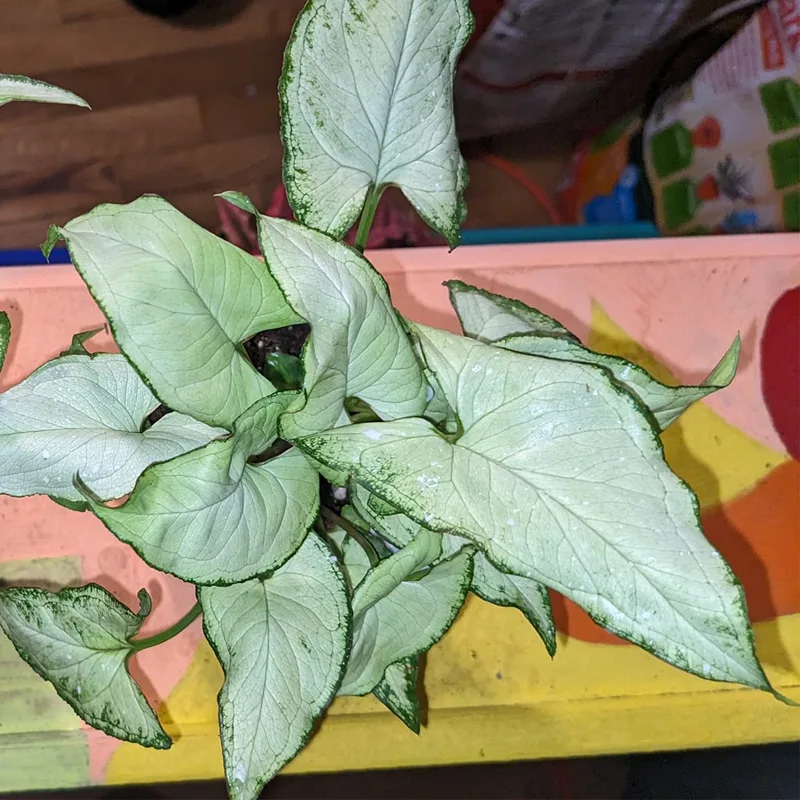
What Is Catalpa Bignonioides?
Catalpa Bignonioides, commonly known as the Southern Catalpa or the Catawba Tree, is a deciduous tree native to the southeastern United States. It’s known for its large, heart-shaped leaves, striking white flowers, and long, bean-like seed pods. The Southern Catalpa is a popular choice for ornamental planting due to its unique appearance and low maintenance needs.
8 Species in Genus Catalpa
Are Catalpa Bignonioides Beans Edible?
I often get asked whether the beans of Catalpa Bignonioides are edible. The answer is no; the seed pods, often referred to as beans, are not considered edible. While they are not toxic, they aren’t palatable and can be quite fibrous. The primary use of the beans is for propagation, as they contain seeds that can grow into new trees. It’s important to avoid consuming them, as they don’t offer any culinary benefits.
How to Care for Catalpa Bignonioides?
Caring for Catalpa Bignonioides is relatively straightforward. Here’s a quick guide based on my own experiences:
- Location: Plant Catalpa Bignonioides in a sunny spot where it can receive at least 6 hours of sunlight daily. It’s adaptable to various soil types but prefers well-drained soil.
- Watering: Regular watering is crucial, especially during dry periods. However, the tree is quite drought-tolerant once established.
- Fertilizing: A balanced, all-purpose fertilizer applied in early spring will support healthy growth and blooming.
- Pruning: Prune the tree in late winter or early spring before new growth begins. This helps maintain its shape and removes any dead or damaged branches.
How to Germinate Catalpa Bignonioides Seeds?
Germinating Catalpa Bignonioides seeds can be a bit challenging but rewarding. Here’s a step-by-step process:
- Stratification: Catalpa seeds need a period of cold stratification to break dormancy. Place the seeds in a moist medium (like sand or peat) and refrigerate them for about 30 days.
- Planting: After stratification, sow the seeds in a well-drained seed starting mix. Plant them about 1 inch deep.
- Watering: Keep the soil consistently moist but not waterlogged.
- Temperature: Maintain a temperature of around 70°F (21°C) for optimal germination.
- Transplanting: Once seedlings have grown a few inches tall and have developed a few sets of leaves, they can be transplanted into larger pots or directly into the garden.
When to Prune Catalpa Bignonioides?
Pruning Catalpa Bignonioides is best done in late winter or early spring before new growth begins. This timing helps avoid disrupting the tree’s natural growth cycle and minimizes stress. Focus on removing dead, diseased, or crossing branches to improve airflow and encourage a balanced structure. Regular pruning also helps manage the size and shape of the tree, ensuring it remains a beautiful and functional part of your landscape.
Catalpa Bignonioides vs. Speciosa
Comparing Catalpa Bignonioides to Catalpa Speciosa reveals some distinct differences:
- Appearance: Catalpa Bignonioides has larger leaves and showier, trumpet-shaped flowers with a white background and purple speckles. Catalpa Speciosa, also known as the Northern Catalpa, has slightly smaller leaves and less vibrant flowers.
- Seed Pods: Both varieties produce long seed pods, but the pods of Catalpa Bignonioides are often a bit shorter and less twisted than those of Catalpa Speciosa.
- Hardiness: Catalpa Bignonioides is generally more suited to the warmer climates of the southeastern U.S., while Catalpa Speciosa is more tolerant of colder temperatures, making it suitable for areas further north.
How to Propagate Catalpa Bignonioides?
Propagation of Catalpa Bignonioides can be done through seeds or cuttings:
- Seeds: As mentioned, seeds need cold stratification before planting. Once germinated, they can be grown into new trees.
- Cuttings: Softwood cuttings taken in late spring or early summer can also be used to propagate the tree. Dip the cuttings in rooting hormone and plant them in a moist, well-draining mix.
What to Plant With Catalpa Bignonioides?
Catalpa Bignonioides pairs well with various plants in the garden. Consider companion plants that complement its size and aesthetics:
- Understory Plants: Hostas, ferns, and shade-loving perennials can thrive in the shade created by the tree’s canopy.
- Ground Cover: Planting ground covers like hosta or creeping jenny beneath the tree can help manage weeds and provide a lush appearance.
- Ornamental Grasses: Pairing Catalpa Bignonioides with ornamental grasses like feather reed grass or blue fescue can add texture and contrast.
Can You Grow Catalpa Bignonioides Indoors?
Catalpa Bignonioides is best suited for outdoor environments due to its large size and specific light requirements. Growing it indoors is impractical as it needs ample space to thrive and cannot handle the low light conditions typical of indoor environments.
Is Catalpa Bignonioides Toxic?
Catalpa Bignonioides is generally not considered toxic to humans or animals. However, the beans are not edible, so it’s best to keep them away from curious pets and children.
Common Problems
Common issues with Catalpa Bignonioides include:
- Pests: Watch for pests like caterpillars and scale insects, which can affect the health of the tree.
- Diseases: Look out for fungal diseases like leaf spot and rust, especially in humid conditions.
Catalpa Bignonioides is a beautiful and versatile tree with specific care needs but is well worth the effort. Its unique appearance and adaptability make it a standout choice for many gardens.
If i die, water my plants!



